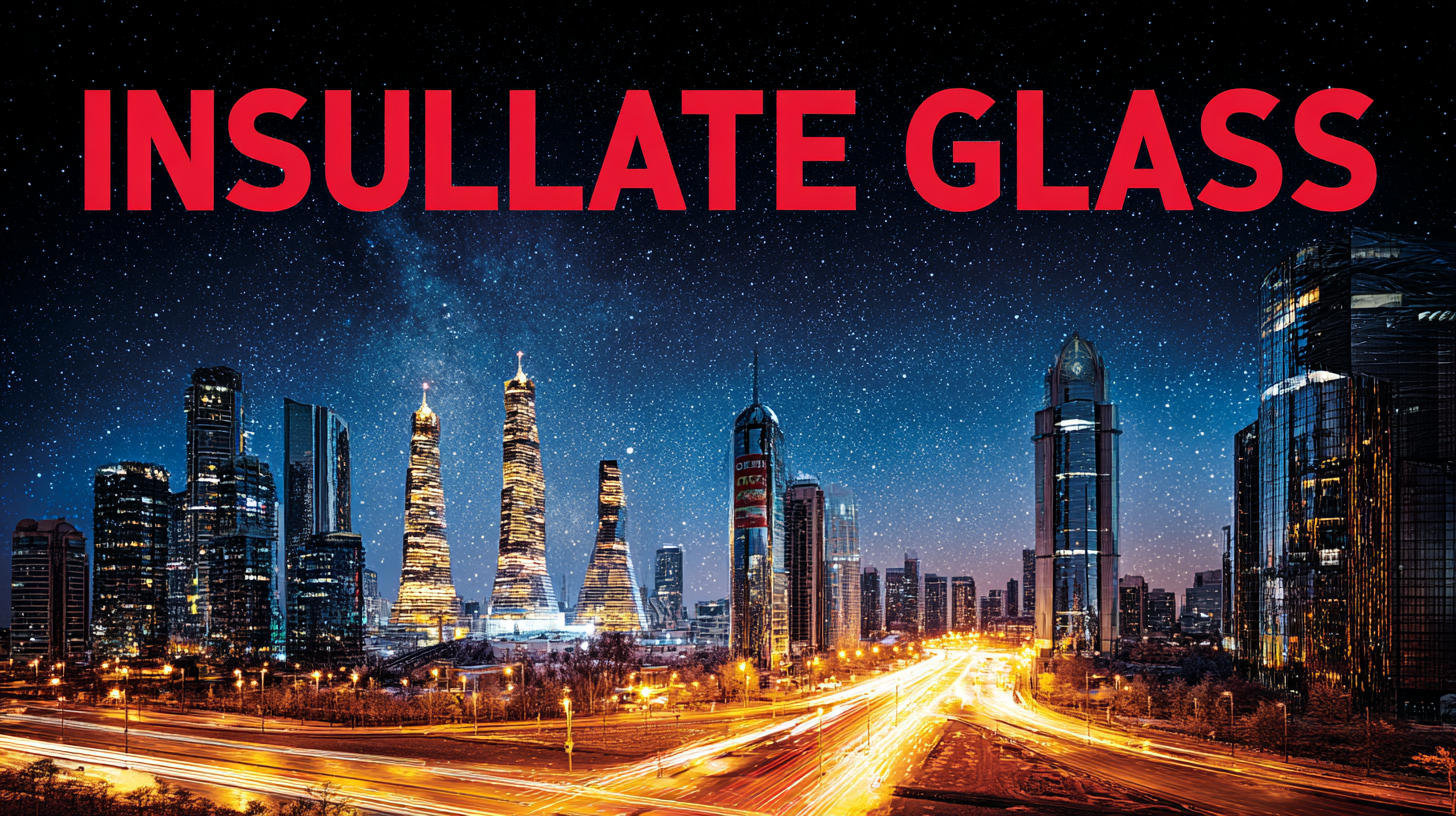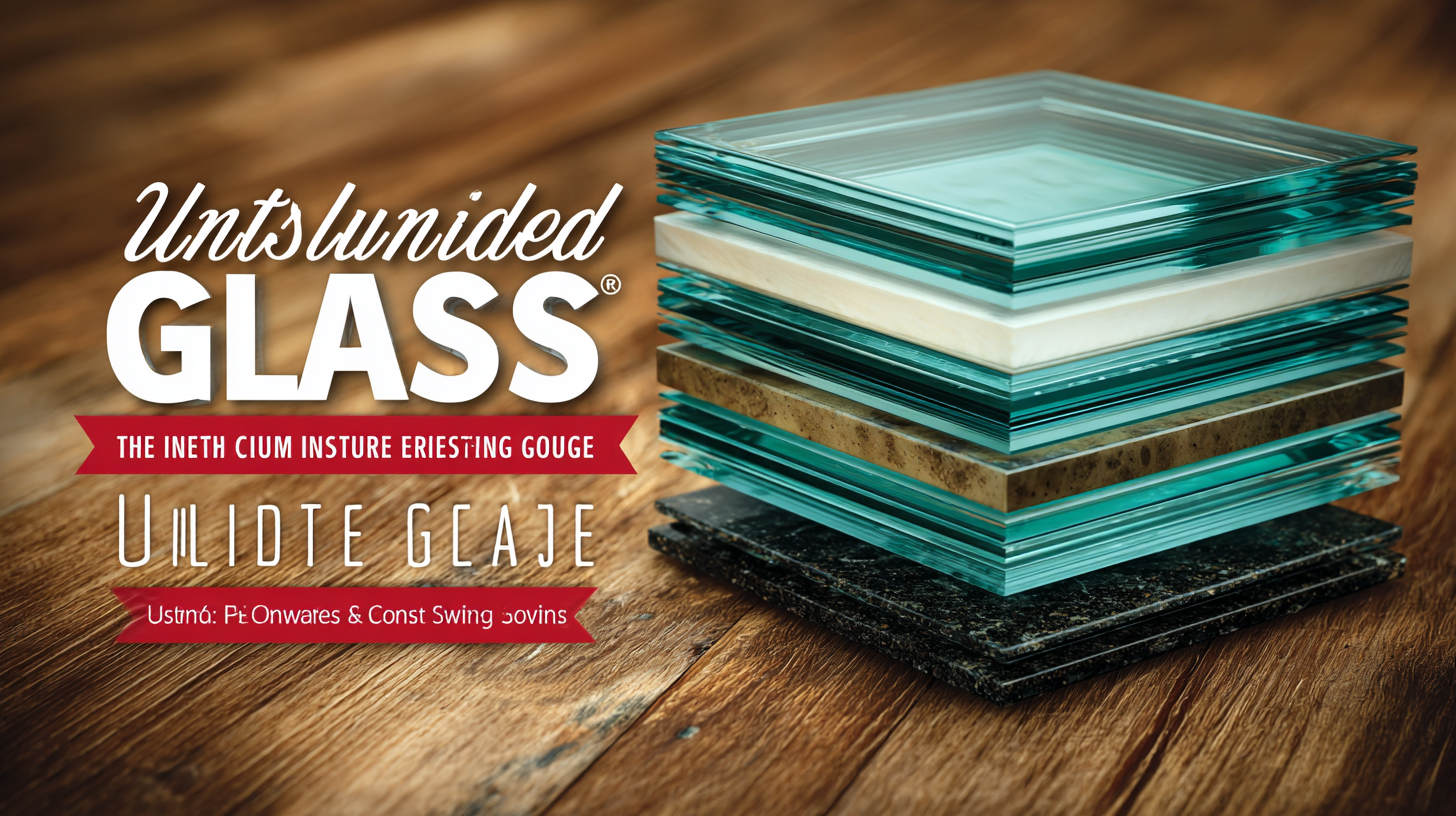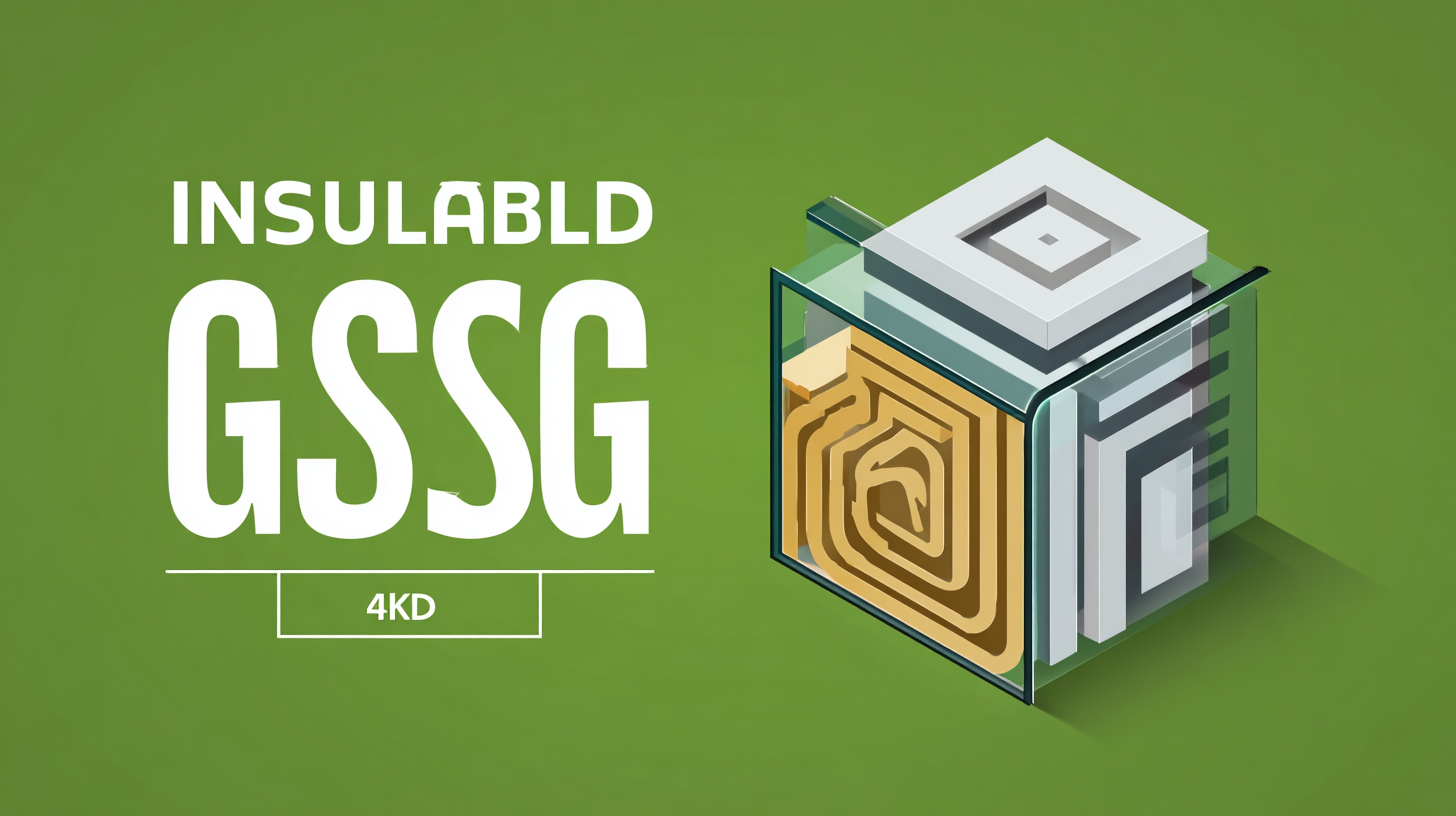
Ultimate Guide to Choosing the Best Insulated Glass for Energy Efficiency and Cost Savings
In the quest for energy efficiency and cost savings, choosing the right type of Insulated Glass has become increasingly vital for homeowners and builders alike. According to the U.S. Department of Energy, windows account for approximately 25-30% of residential heating and cooling energy use, highlighting the importance of selecting high-performance glazing solutions. Insulated Glass not only enhances comfort by minimizing heat loss in winter and heat gain in summer, but it also contributes significantly to reducing energy expenses, with studies indicating potential savings of up to 15% on energy bills. As the market evolves, various alternatives to traditional insulated glass are emerging, offering innovative features that meet diverse needs for durability, aesthetics, and environmental impact. This guide will explore these alternatives, helping you make informed decisions that align with energy efficiency goals while optimizing cost savings.

Understanding Insulated Glass and Its Energy Efficiency Benefits
Insulated glass is increasingly recognized for its energy efficiency benefits, which are critical in modern building design. With advancements in technology, windows featuring double and triple glazing can significantly reduce heat loss and enhance comfort in residential and commercial spaces. The seasonal thermal performance of these windows illustrates how various factors, such as the window opening area, can impact energy consumption. By optimizing these variables, homeowners can achieve substantial cost savings and a reduced carbon footprint.
Recent innovations have further improved energy efficiency in insulated glass. Low emissivity coatings have been developed that can be retrofitted to existing windows, providing proven energy savings while enhancing occupant well-being. Additionally, the collaboration between industry leaders in developing ultra-thin architectural glass highlights the ongoing evolution in glass processing technology, ensuring that builders and homeowners have access to solutions that balance thermal and acoustic demands. This comprehensive approach to window design not only improves energy efficiency but also contributes to overall home comfort, making insulated glass a wise investment for any property owner.
Types of Insulated Glass Units: Choosing the Right One for Your Home
When selecting the right insulated glass unit for your home, it's essential to understand the various types available and how they contribute to energy efficiency. The most common types include double-glazed and triple-glazed units. Double-glazed units consist of two panes of glass separated by a space filled with inert gas, providing effective insulation. Triple-glazed units take this a step further, adding a third pane for even greater thermal performance. This can be particularly beneficial in regions with extreme temperatures, reducing energy bills significantly.
Tips: Consider the specific climate of your area. If you live in a colder region, triple-glazed glass might be worth the investment for maximum insulation. However, if your area experiences mild weather, double-glazed units may offer sufficient efficiency at a lower cost.
Another critical factor is the type of gas used between the glass panes, such as argon or krypton. These gases have excellent thermal properties and help prevent heat transfer. When choosing your insulated glass, ask about the gas fill and its efficiency ratings.
Tips: Ensure your chosen insulated glass units have a reputable warranty. This indicates durability and can save you costs in the long run, as quality insulation can lead to significant energy savings over time.

Key Performance Metrics: U-Factor, Solar Heat Gain Coefficient, and Visibility
When selecting insulated glass for energy efficiency and cost savings, understanding key performance metrics like the U-Factor, Solar Heat Gain Coefficient (SHGC), and visibility is crucial. The U-Factor, which measures the rate of heat transfer, plays a significant role in determining how well your insulated glass will keep your home warm in winter and cool in summer. According to the National Fenestration Rating Council (NFRC), lower U-Factors (typically ranging from 0.20 to 0.35 for energy-efficient windows) correlate with better insulation properties, ultimately leading to lower energy bills.
The Solar Heat Gain Coefficient (SHGC) measures how much solar radiation passes through the glass. A lower SHGC value means less heat gain, which is advantageous in warmer climates. Reports indicate that SHGC ratings below 0.30 can provide substantial energy savings, especially during summer months when air conditioning costs rise. On the other hand, in colder climates, a higher SHGC can be beneficial to harness solar energy for heating.
Tip: When choosing insulated glass, consider your local climate. Opt for a low U-Factor and a SHGC that best suits your heating and cooling needs. Additionally, always look for ENERGY STAR® certified products, as they meet strict energy efficiency guidelines. Another tip: during installation, ensure proper sealing to maximize the performance of your insulated glass, preventing air leaks and maintaining energy savings.
Cost Analysis: Balancing Initial Investment with Long-Term Energy Savings
When selecting insulated glass, the cost analysis is crucial. While the initial investment in high-performance insulated glass may seem significant—typically ranging from $5 to $15 per square foot depending on the type—this upfront cost can lead to substantial long-term energy savings. According to the U.S. Department of Energy, upgrading to energy-efficient windows can reduce heating and cooling costs by 7% to 15% per year. Over time, these savings can offset the initial expenditure, making it a financially prudent choice.
**Tips:** Consider the climate of your area when selecting insulated glass. For colder regions, triple-glazing may provide optimum performance, while in milder climates, double-glazing could suffice. Also, look for products with a low U-factor and low solar heat gain coefficient (SHGC), which indicate better insulation and energy efficiency.
Moreover, it is essential to factor in the lifespan of your investment; many insulated glass units have a lifespan of 20 years or more, and with proper maintenance, they can last longer. This durability further supports the case for investing in more efficient options, ensuring that your choice continues to pay dividends in energy savings for many years to come.
**Tips:** Don't forget to look for rebates and incentives available in your area for energy-efficient upgrades, as these can significantly reduce your out-of-pocket costs.

Installation Tips for Maximizing the Efficiency of Insulated Glass Systems
When it comes to maximizing the energy efficiency of insulated glass systems, proper installation is crucial. First, ensure that the frame is in good condition and properly sized for the insulated units. A common mistake is neglecting to check for air leaks around the frame, which can significantly reduce the insulating properties of the glass. Use high-quality weatherstripping and sealants during installation to create an airtight fit, preventing thermal bridging and minimizing energy loss.
Additionally, consider the orientation of the insulated glass units. Installing them in a way that optimizes natural light while minimizing heat gain or loss is essential. For instance, south-facing windows can help harness passive solar energy during winter but might require adjustable shading in summer. Lastly, ensuring that the units are level and square will not only enhance their performance but also extend their lifespan, ultimately leading to greater cost savings and energy efficiency in your home.
Ultimate Guide to Choosing the Best Insulated Glass for Energy Efficiency and Cost Savings
| Glass Type | U-Value (W/m²K) | Solar Heat Gain Coefficient (SHGC) | Cost per Square Foot ($) | Expected Lifespan (Years) |
|---|---|---|---|---|
| Single Pane | 5.0 | 0.87 | $8.00 | 10 |
| Double Glazing | 2.5 | 0.73 | $15.00 | 20 |
| Triple Glazing | 1.2 | 0.60 | $25.00 | 30 |
| Low-E Coating | 1.5 | 0.57 | $18.00 | 25 |
| Argon Gas Fill | 1.0 | 0.64 | $22.00 | 25 |
